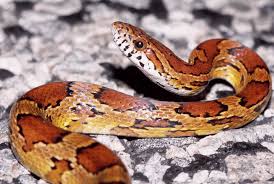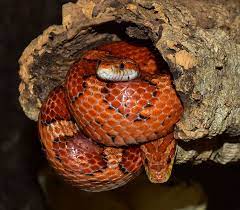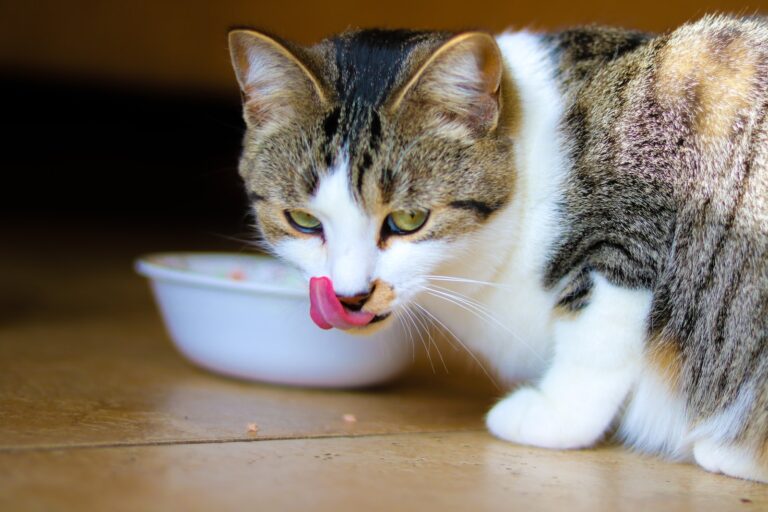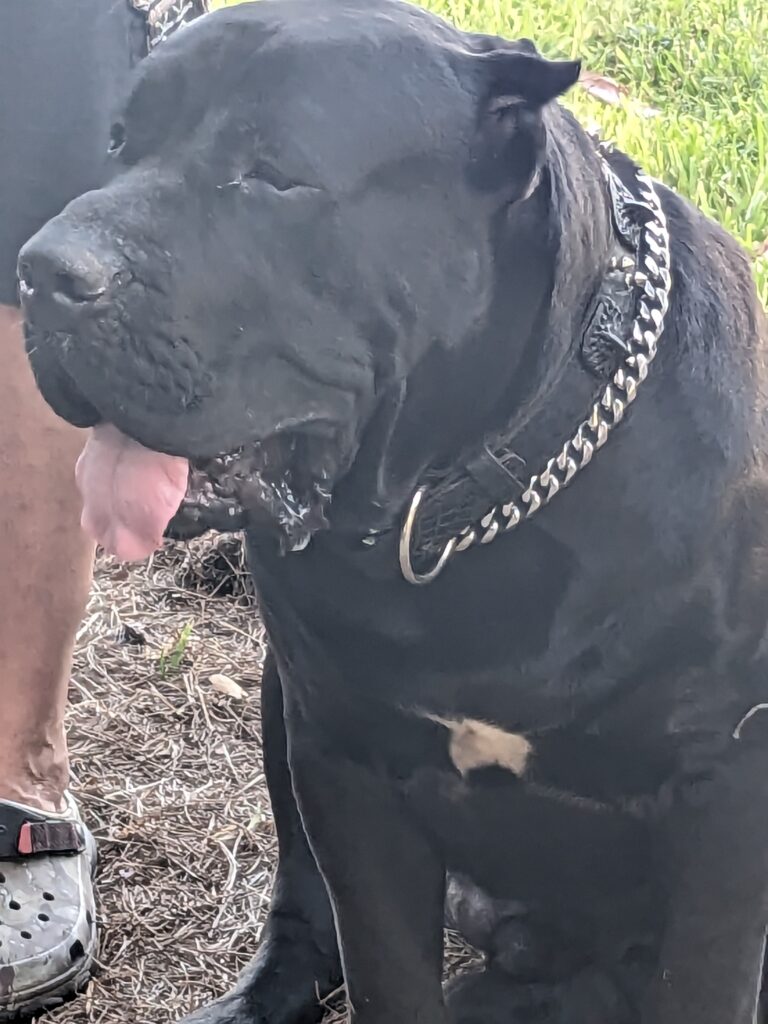Your Guide to Corn Snake Care: From Adoption to Expert Care
Are you feeling the allure of becoming a devoted snake owner, ready to venture into the captivating realm of reptile companionship? Whether you’re a seasoned herpetology enthusiast or a first-time reptile enthusiast, the corn snake (Pantherophis guttatus) emerges as a stellar choice for your reptilian companion. These enchanting creatures are celebrated for their calm demeanor, striking visual appeal, and manageable size, earning them a cherished place in the hearts of snake enthusiasts worldwide. In this comprehensive guide, we’ll be your guiding hand, leading you through the fundamental steps of corn snake care. From the crucial process of selecting your new serpentine friend to providing expert-level husbandry, we’ll equip you with the knowledge and know-how to forge a happy and thriving environment for your cherished corn snake. So, without further ado, let’s embark on this educational journey, discovering how to create a home that ensures the contentment and vitality of your extraordinary reptilian companion.


Choosing Your Corn Snake
When it comes to acquiring a corn snake, it’s paramount to select a source with a reputation for ethical breeding and proper care. Reputable breeders, local reptile expos, and established pet stores specializing in reptiles are excellent places to start your search. These avenues often provide assurance in the form of healthy, well-maintained snakes and valuable advice for new owners.
Now, regarding the price, the average cost of a corn snake can fluctuate based on various factors. One of the primary determinants is the snake’s morph, which refers to its color and pattern variations. In general, you can find these serpents priced between $20 and $100. However, it’s worth noting that certain rare or specially bred morphs may command higher prices in the market. It’s advisable to set a budget that encompasses not only the snake’s initial cost but also other essential expenses, including an appropriate enclosure, heating and lighting equipment, hides, and other vital elements of their habitat.
When deciding on the best age for your new corn snake, it’s beneficial to consider both experience level and personal preference. Juvenile snakes, typically under a year old, are often chosen by new snake owners. They allow for a longer bonding period and the opportunity to observe their growth and development. On the other hand, adult snakes, which are generally over a year old, might be a better fit for those seeking a more low-maintenance pet. Additionally, adult snakes can be easier to determine the sex of, as they exhibit more pronounced physical characteristics.
Determining the sex of a corn snake requires a keen eye and some knowledge of snake anatomy. One way to do this is by examining the length and width of the tail. In most cases, male corn snakes have longer and thicker tails compared to females. Additionally, probing (a technique done by experienced snake handlers) can be used to accurately determine the sex of a snake. However, this procedure should only be performed by individuals with proper training to ensure the safety and well-being of the snake. The average price of a corn snake can vary based on factors like morph (color and pattern variations) and age.
Corn Snake Habitat Setup
Crafting an optimal habitat, commonly known as a terrarium, stands as a pivotal aspect of ensuring your corn snake’s overall health and contentment. While a 20-gallon tank is typically adequate for an adult corn snake, opting for a larger enclosure offers even more room for them to roam, explore, and engage with their environment. It’s worth noting that ample space not only supports physical exercise but also encourages natural behaviors, contributing to their overall well-being.
To safeguard against potential escape attempts, be sure to select an enclosure with a secure and well-fitting lid. Corn snakes have a reputation for being adept escape artists, so this precaution is essential in keeping them safe and preventing any unintended excursions.
Within the habitat, the choice of substrate plays a crucial role in replicating the snake’s natural environment. Aspen bedding, known for its excellent burrowing capabilities, is a popular and highly recommended choice. This substrate not only allows your corn snake to engage in natural behaviors like burrowing and digging but also helps maintain proper humidity levels within the enclosure. This is particularly important for shedding, as the right humidity ensures a smooth and successful shedding process.
Additionally, consider incorporating a range of enrichments within the habitat. This could include hides, branches, and other forms of environmental stimulation. Providing a variety of hiding spots allows your corn snake to feel secure and reduces stress, as they have the option to retreat when they desire privacy or rest. Branches and climbing structures offer opportunities for physical activity, which is vital for their muscular health and mental stimulation.
Remember to maintain a clean and hygienic environment by conducting regular spot cleaning and complete substrate changes as needed. Monitoring the temperature and humidity levels within the enclosure is also crucial, as these factors directly impact your corn snake’s overall health and well-being.
By dedicating careful attention to the design and maintenance of the terrarium, you’re not only creating a comfortable and stimulating home for your corn snake but also fostering an environment that supports their natural behaviors and ensures their long-term health and happiness.
Temperature and Lighting
Corn snakes, being ectothermic creatures, depend on external sources to manage their body temperature. To cater to this crucial aspect of their well-being, it’s imperative to establish a temperature gradient within the enclosure. On one side, maintain a warm zone with temperatures hovering around 85°F (29°C). On the opposing side, create a cooler area with temperatures around 75°F (24°C). Achieving this temperature disparity allows your corn snake to freely move about and select the temperature that best suits their needs. To maintain the desired temperatures, consider employing under-tank heating pads or heat lamps. These tools are effective in providing localized warmth, ensuring that your snake has access to both warm and cooler areas as needed. This setup mimics the conditions they would encounter in their natural habitat, allowing them to regulate their body temperature according to their preferences.
In addition to temperature regulation, it’s crucial to establish a consistent day-night cycle within the enclosure. This can be accomplished using a natural light source or a reptile-specific UVB lamp. Providing a reliable light cycle not only mirrors their natural environment but also supports their internal biological rhythms.
Hydration and Humidity
Providing a consistent source of fresh, clean water is paramount for the well-being of your corn snake. Place a shallow dish within easy reach to ensure easy access for drinking. While corn snakes generally do not soak, they may occasionally choose to drink from their water source. Regularly check and replenish the water to keep it in optimal condition. Maintaining the right humidity levels is equally crucial. Aim for a humidity range of approximately 40-50%. This helps prevent issues related to shedding, as overly dry conditions can lead to complications during the shedding process. To monitor humidity levels accurately, consider using a humidity gauge within the enclosure. This tool will enable you to make necessary adjustments to maintain the optimal environment for your snake’s health and comfort.
Feeding Your Corn Snake
Corn snakes, as carnivorous reptiles, have a natural inclination towards small rodents as their primary source of sustenance. For adult corn snakes, it’s recommended to provide appropriately sized prey items, like frozen-thawed mice or rats, at intervals of 1-2 weeks. Juveniles, being in a phase of rapid growth, benefit from more frequent feeding. When offering prey, ensure that the size matches the width of the snake’s thickest part. This ensures that the meal is manageable and safe for your corn snake to consume. It’s crucial to employ feeding tongs during this process to prevent any accidental bites. This not only safeguards your safety but also helps your snake associate feeding with the tongs, reducing any unnecessary stress. After a successful feeding, grant your snake a period of 24-48 hours to digest its meal undisturbed. This post-feeding period is crucial for their digestive processes and should be respected to ensure the well-being of your snake. Providing a tranquil environment during this time allows them to fully benefit from their meal and promotes overall health and vitality.
Corn snake handling and interaction
Corn snakes are renowned for their docile and gentle disposition, which places them among the most suitable snake species for handling. To initiate the handling process, start with brief and tender sessions to give your snake the opportunity to acclimate to your touch. When handling, be sure to provide adequate support to their body to ensure they feel secure and comfortable. It’s important to note that there are specific times when handling should be avoided. Firstly, it’s best to refrain from handling your snake during shedding, as this process can make them more sensitive and prone to stress. Additionally, it’s advisable to abstain from handling after feeding to prevent potential regurgitation, a process that can be stressful and detrimental to your snake’s health. While corn snakes are generally well-tempered, it’s crucial to remember that any snake, including a corn snake, can bite if they feel threatened or stressed. However, such instances are rare, especially with proper handling and care. By following these guidelines, you can foster a positive and trusting relationship with your corn snake while ensuring their well-being and contentment.
As you embark on your journey into the world of snake ownership, remember that responsible care is essential for the well-being of your corn snake. With proper husbandry, a suitable habitat, and regular handling, you can enjoy a fulfilling and rewarding experience as a corn snake owner. So, prepare your terrarium, choose your snake wisely, and get ready for years of companionship with your captivating corn snake.






